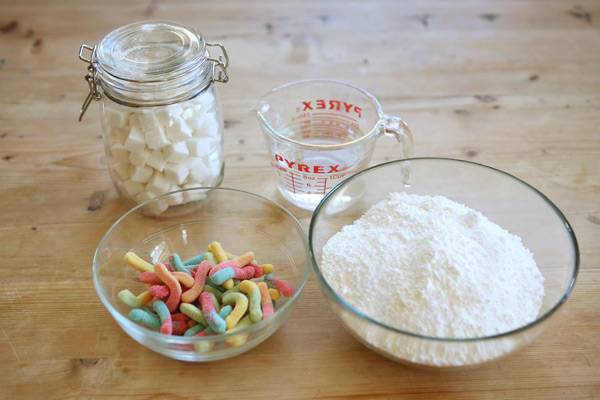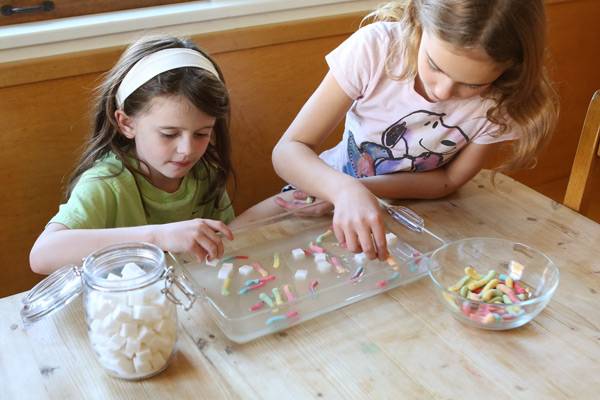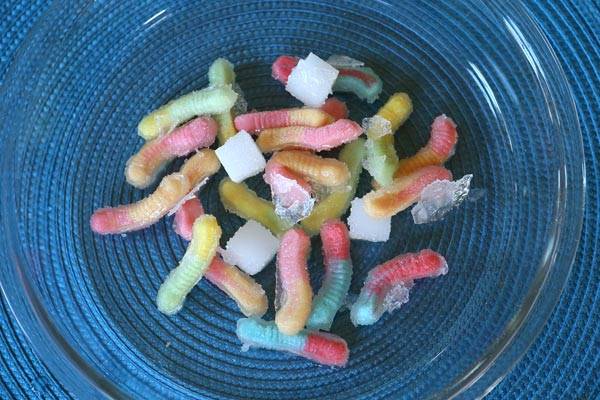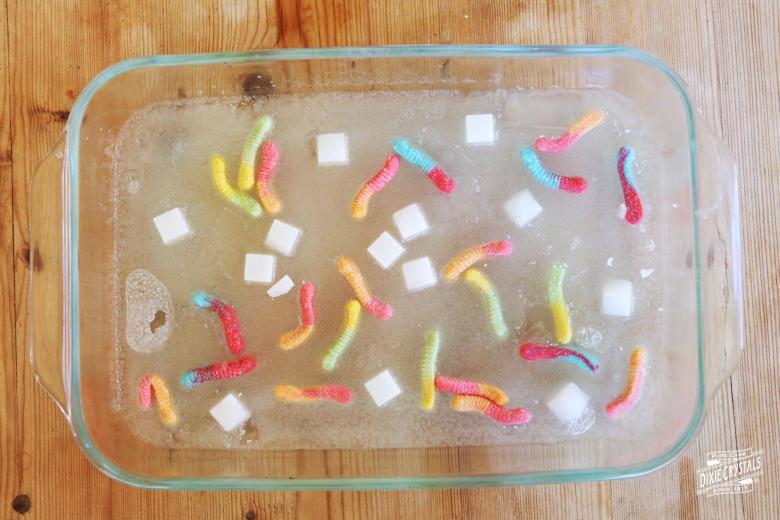Description
What happens when you cover the bottom of a plate with water and place a sugar cube on the plate? After a few minutes, the sugar in the cube will vanish! That’s because the sugar molecules easily dissolve into the water.
How can you make a water solution that won't melt a sugar cube? Start by adding sugar to water and boiling it. What you create is a supersaturated sugar solution (aka simple syrup). It's called "supersaturated" because it simply cannot hold any more sugar molecules. Now if you cover the bottom of a dish with this solution and add a sugar cube, the cube will get wet -- but won’t dissolve. That's because there’s no more space for sugar molecules in the solution.
When you add anything coated with sugar (like a sour gummy worm) to a supersaturated sugar solution, the sugar molecules in the solution will release and attach themselves to the sugar on the worms, creating even bigger crystals. It's as if the gummy worms have magnets inside them!
These large crystals form because there is more sugar than water in a supersaturated solution. As the water gradually evaporates and turns from a liquid to a gas, crystals form and fuse together.
Sound fun? Let's try it for ourselves by making a supersaturated sugar solution from powdered sugar. We'll add sour gummy worms and sugar cubes to create an “icy” pond where a sugar crystal surface will form, “freezing” your worms into place.
Supplies

- 1 pound box Dixie Crystals Powdered Sugar
- 1 cup water
- 10 - 15 Dixie Crystals Sugar Cubes
- Sour gummy worm candies
Directions
- Mix together water and powdered sugar. Bring to a boil (with adult supervision) on the stove and stir for one minute to dissolve the powdered sugar and form a supersaturated sugar solution.
- Remove from heat and have an adult pour the sugar syrup into a clear heatproof container. We used an 8x12 glass casserole dish, but you could use a slightly smaller container for a deeper “pond.”
- Let cool for 1 hour.

- When cool, add sour gummy worms and sugar cubes to the “pond” of sugar syrup. Save a worm as a control, so you can compare it to the worms that have been sitting in the sugar solution.
- Observe the experiment without disturbing the crystals over 3 or 4 days as crystals form. Periodically check the thickness of the crystal layer forming on the surface.
- Use a spatula and fork to chip the sugary worms out of the “icy” pond and observe the sugar crystals growing on them with a magnifying glass. Are they all the same shape? Have the sugar crystals on them grown bigger? How does it compare to your control worm?
- Last, but not least, taste your science experiment!


Science experiment created by Liz Heinecke. Liz shares her love of science through her blog, The Kitchen Pantry Scientist and she recently published her first science book: Kitchen Science Lab for Kids, a book of 52 fun and educational science projects for kids of all ages.
Photos by Amber Procaccini.

